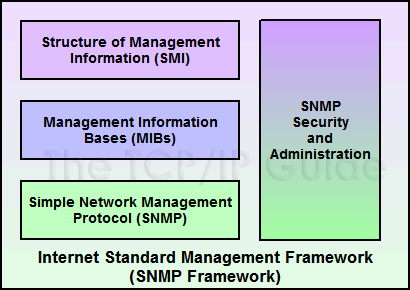 |
|
Please Whitelist This Site?
I know everyone hates ads. But please understand that I am providing premium content for free that takes hundreds of hours of time to research and write. I don't want to go to a pay-only model like some sites, but when more and more people block ads, I end up working for free. And I have a family to support, just like you. :)
If you like The TCP/IP Guide, please consider the download version. It's priced very economically and you can read all of it in a convenient format without ads.
If you want to use this site for free, I'd be grateful if you could add the site to the whitelist for Adblock. To do so, just open the Adblock menu and select "Disable on tcpipguide.com". Or go to the Tools menu and select "Adblock Plus Preferences...". Then click "Add Filter..." at the bottom, and add this string: "@@||tcpipguide.com^$document". Then just click OK.
Thanks for your understanding!
Sincerely, Charles Kozierok
Author and Publisher, The TCP/IP Guide
|
|
|

Custom Search
|
|
TCP/IP Internet Standard Management Framework Architecture and Protocol Components
(Page 1 of 2)
TCP/IP network management is based on the Simple Network Management Protocol, abbreviated SNMP. As we saw in the overview topic, however, this term is ambiguous. While it is commonly used to refer to the actual communication protocol used to exchange network management information, the term also refers to the entire set of technologies that enable TCP/IP network management. The technical name for this larger architecture is the Internet Standard Management Framework. Again, even though it may seem strange, this term is actually abbreviated in the standards as “SNMP”. For simplicity, I abbreviate it as the “SNMP Framework”, to differentiate it from the SNMP protocol.
he Internet Standard Management Framework encompasses all of the technologies that comprise the TCP/IP network management solution. The SNMP Framework consists of a number of architectural components that define how management information is structured, how it is stored, and how it is exchanged using the SNMP protocol. The Framework also describes how the different components fit together, how SNMP is to be implemented in network devices, and how the devices interact.
As we will explore in more detail later, the Internet Standard Management Framework is entirely information-oriented. It includes the following primary components (see Figure 271):
- Structure of Management Information (SMI):
To ensure interoperability of various devices, we want to have a consistent
way of describing the characteristics of devices to be managed using
SNMP. In computer science, a data description language (DDL)
is the tool for this job. The Structure of Management Information
(SMI) is a standard that defines the structure, syntax and characteristics
of management information in SNMP.
- Management Information Bases (MIBs): Each
managed device contains a set of variables that is used to manage it.
These variables represent information about the operation of the device
that is sent to a network management station, and/or parameters sent
to the managed device to control it. The management information base
(MIB) is the full set of these variables that describe the management
characteristics of a particular type of device.
Each variable in a MIB is called a MIB object, and is defined using the SMI data description language. A device may have many objects, corresponding to the different hardware and software elements it contains. Initially, a single document defined the MIB for SNMP, but this model was inflexible. To allow new MIB objects to be more easily defined, groups of related MIB objects are now defined in separate RFC standards called MIB modules. Over 100 such MIB modules have been defined so far. - Simple Network Management Protocol (SNMP):
This is the actual SNMP protocol itself. It defines how information
is exchanged between SNMP agents and network management stations. The
SNMP protocol operations define the various SNMP messages and
how they are created and used. SNMP transport mappings describe
how SNMP can be used over various underlying internetworks, such as
TCP/IP, IPX and others.
- Security and Administration: To the three
main architectural components above, the SNMP Framework adds a number
of supporting elements. These provide enhancements to the operation
of the SNMP protocol for security, and address issues related to SNMP
implementation, version transition and other administrative issues.
Figure 271: Components of the TCP/IP Internet Standard Management Framework

|
| |||||||||||||||||||
Home - Table Of Contents - Contact Us
The TCP/IP Guide (http://www.TCPIPGuide.com)
Version 3.0 - Version Date: September 20, 2005
© Copyright 2001-2005 Charles M. Kozierok. All Rights Reserved.
Not responsible for any loss resulting from the use of this site.






